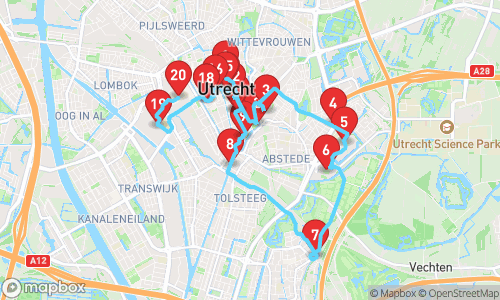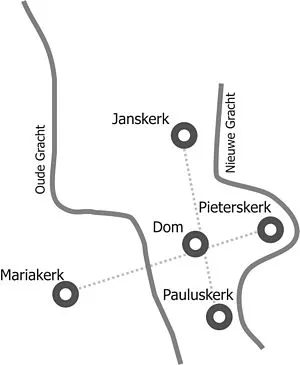

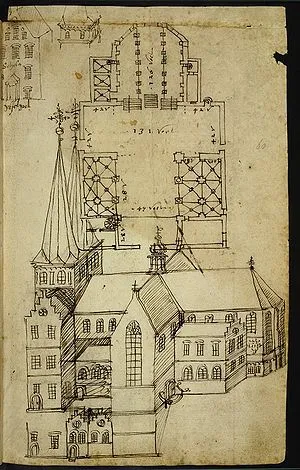
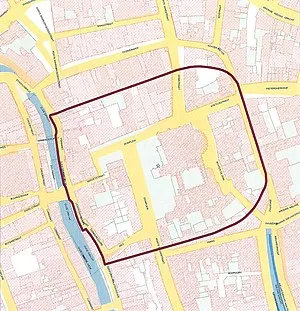
Historisch Utrecht: Een Reis Door Tijd En Cultuur

Tour Guide
Hans De Hengel
Welcome to Utrecht! On this GPS guided audio tour, we will visit 20 stops on a route of 2.60km. This tour focusses mainly on history.
Locatello is an app where you can generate personal audio guided tours. Set your preferred distance, guide, language and theme, and a guided tour is created on the spot.
Walking Time
Distance
stops
Language
Tour Stops

Kerkenkruis
A kerkenkruis is a formation of churches that form a cross on a map, with the Utrecht Cathedral as the central point, and four other churches as its extremities, all dating from the Middle Ages.

Jan van Nassau
A bronze statue depicting Jan van Nassau, the initiator of the Union of Utrecht, showing him holding a paper with the union's text and resting his other hand on his shield.

St. Salvator's Church
A 12th-century Romanesque-Gothic church building that was originally dedicated to St. Salvator, featuring a deep choir, transept, and short nave, and later adapted to serve as a chapter church.

Traiectum
A Roman castellum, Traiectum, was a fortification on the Lower Limes Germanicus defensive lines, built from wood in the 1st century AD and rebuilt in stone in the 3rd century AD.
Audio Preview
30 sec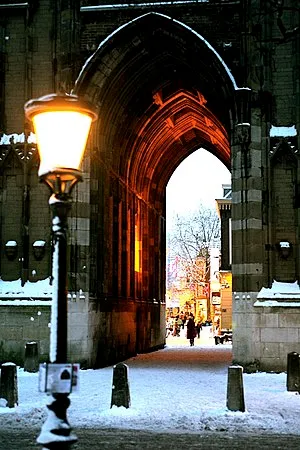
Dom Tower of Utrecht
A 112.32-metre-tall church tower in the Netherlands, considered the symbol of Utrecht, built between 1321 and 1382, and standing at the spot where the city originated almost 2,000 years ago.

St. Martin's Cathedral
A Gothic cathedral in Utrecht, remaining parts including the choir, transept, and Dom Tower.
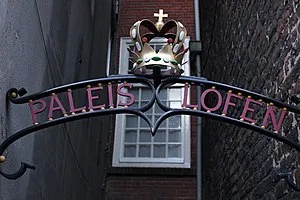
Paleis Lofen
A kaiserpfalz, a palace of the German emperors, that was built in the mid-11th century, divided in the middle by a row of sandstone columns, with a tufstone outer wall and a basement.
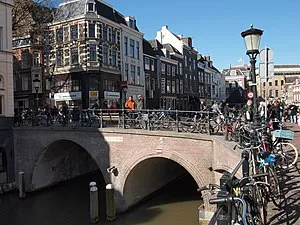
Maartensbrug
A historic bridge in Utrecht, the Maartensbrug is the oldest bridge over the Oudegracht and has been used for centuries as a path for mode of transportation, now a protected national monument.

St. Eloy's Hospice
A former hospital, currently a guildhall, occupied by the Smedengilde (guild of smiths) since 1440, with a rich history and traditions, including a kolf court and charitable activities.

Duitse Huis
A squatter's house, formerly known as the Duitse Huis, is a historic building complex that was once the headquarters of the Teutonic Order.
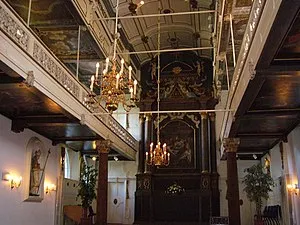
clandestine church
A clandestine church is a house of worship used by religious minorities, secretly built and maintained without exterior markers, allowing them to hold discreet and non-public worship services, often tolerated by governments in the wake of the Reformation.
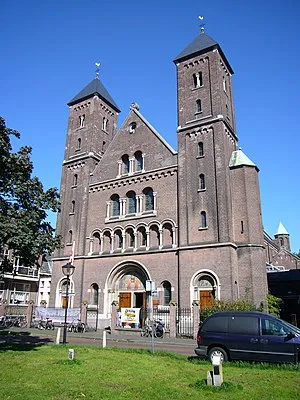
St. Gertrude's Cathedral
A Neo-Romanesque cathedral, constructed between 1912 and 1914, designed by E.G. Wentinck, featuring an altar with over 1700 relics in hundreds of containers, and said to contain a piece of a rib of St. Willibrord.
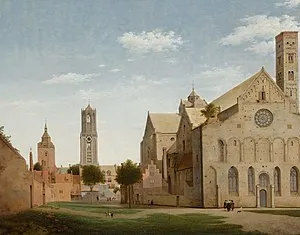
St. Mary's Church
A Romanesque church built to resemble the Speyer Cathedral, founded by Henry IV and Conrad, Bishop of Utrecht, in the 11th century, with unique Lombard-style architecture in its nave and west side.
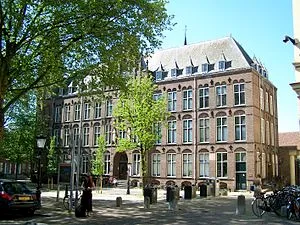
Utrechts Conservatorium
A Conservatory of Music in the Netherlands, part of the Utrecht School of the Arts (HKU), founded in 1875 and one of the country's oldest professional musical education institutes.
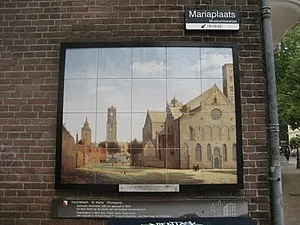
Mariaplaats
Mariaplaats is a square in Utrecht, named after the vanished Mariakerk. It forms the northern and eastern parts of the former church's square.
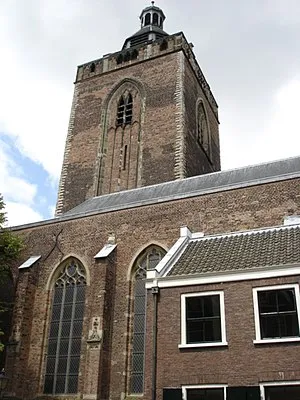
Buurkerk
A medieval parish church, the Buurkerk, has a long history of fires, including incidents in 1131, 1173, 1253, and 1279, and was later used as a protestant church before falling into disuse in 1975 and being transformed into a museum in 1984.
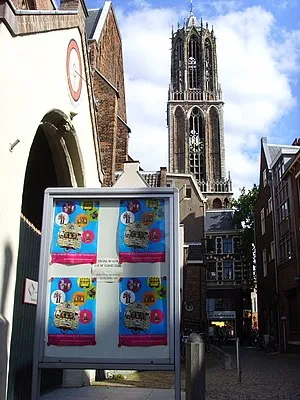
Museum Speelklok
A museum specializing in self-playing musical instruments, featuring music boxes, musical clocks, pianolas, barrel organs, and more, allowing visitors to see and hear these instruments play.
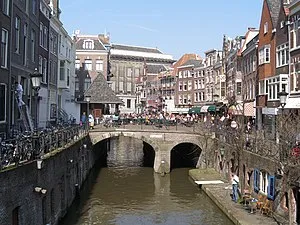
Visbrug, Utrecht
A historic bridge in Utrecht's city center, spanning the Oudegracht. The 25-meter-wide arched bridge is constructed from brick and natural stone with iron balustrades, featuring two boat passage openings and a pedestrian area.
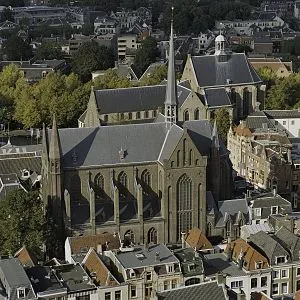
St. Willibrord's Church, Utrecht
A stunning example of Dutch Gothic Revival architecture, this church features elaborate and colorful interior decorations, including paintings, wood carvings, and stained glass windows depicting the life of St. Willibrord.
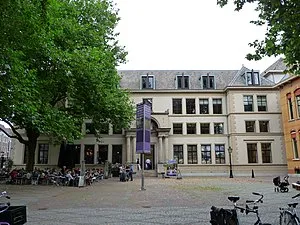
St. Paul's Abbey
A Romanesque church building dedicated to the Apostle Paul, constructed in approximately 1050 and featuring a conventional three-part nave, twin towers, and constructed from tuff stone.
Download App
Experience this tour and many more with our mobile app. Available for iOS and Android.
Audio Preview
Tour Map
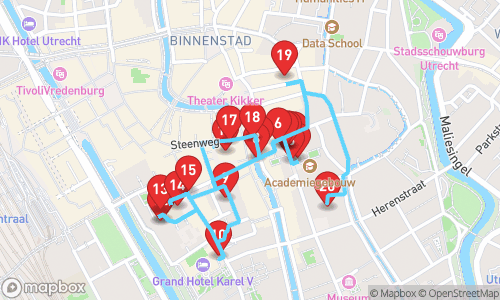
Quick Facts
- ✓GPS-guided navigation
- ✓Professional audio narration
- ✓Offline maps available
- ✓Free to try
Why Choose This Tour
Expert Local Guide
Narrated by Jenny Multilingual, specializing in general tourism
Flexible Timing
Take the tour at your own pace, any time of day
